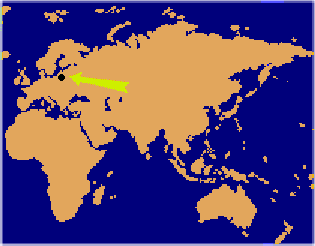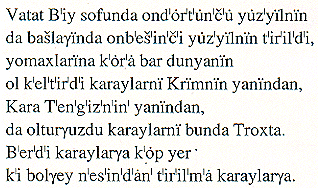


Karaim shares many properties with its closest cognates, other Kipchak-Turkic languages, such as Karachay, Crimean Tatar, Nogay. The communities who speak these languages are also related by common elements of folklore and material culture, such as tales, proverbs, riddles, folk-poetry, and names of dishes.
There are only about 50 people in Lithuania who can still understand Karaim and can use the language in everyday conversation. In the Ukraine the number of speakers is eight. The Karaims in Poland do not use Karaim when communicating with each other but there are still some 'rusty speakers' who remember the language. Although Karaim in the Crimea is regarded as being extinct today, there are some young people who are trying to revive the language by learning it from books.
Thus the number of speakers with a good command of Karaim is very low. This, however, does not mean that the language is dead. As long as there are speakers, it is still alive and it is still possible to investigate it as a living language.
Today the Karaim community is very keen to revive and pass on its language to the younger generation. This CD project aims to support this effort.
| Karaim | English |

|
Vytautas lived at the end of the fourteenth to the beginning of the fifteenth century. According to what everybody says, he brought the Karaims from Crimea, from the coast of the Black Sea, and made the Karaims settle here in Trakai. He gave the Karaims a lot of land, so that they should have something to live on. |

| Project |
The Karaim community |
The Karaim language | Participants |